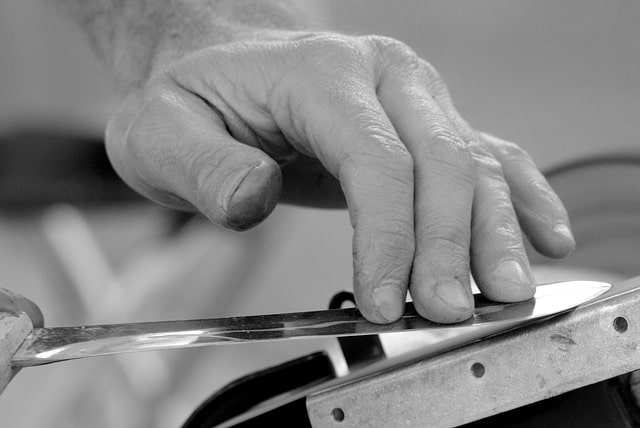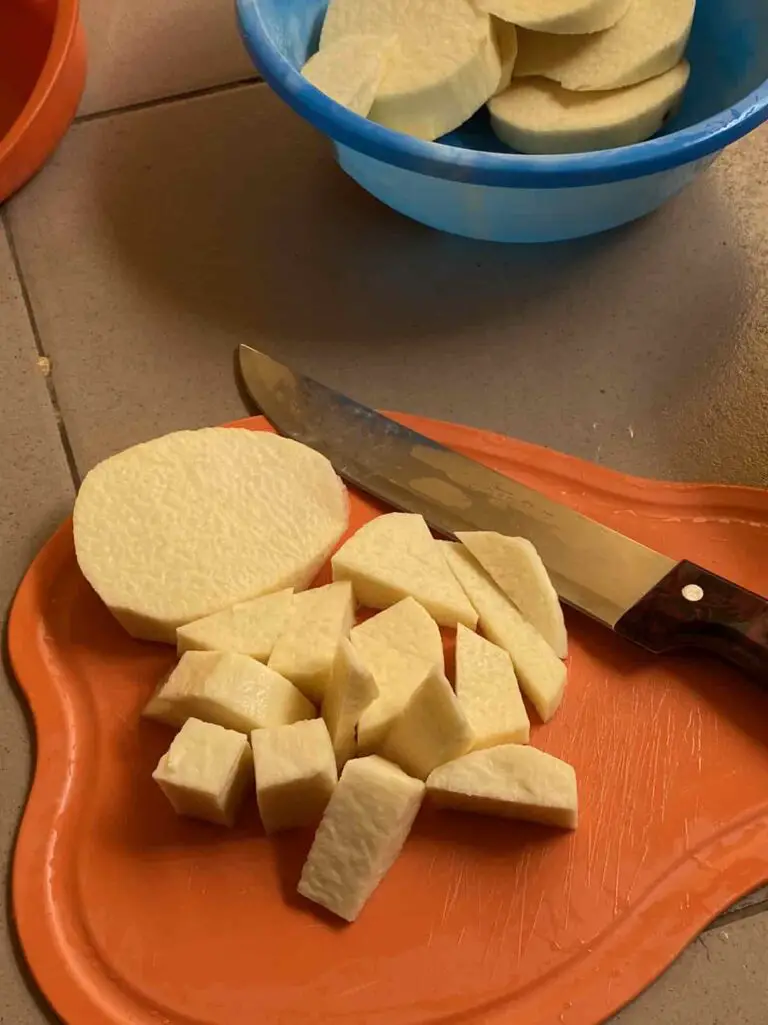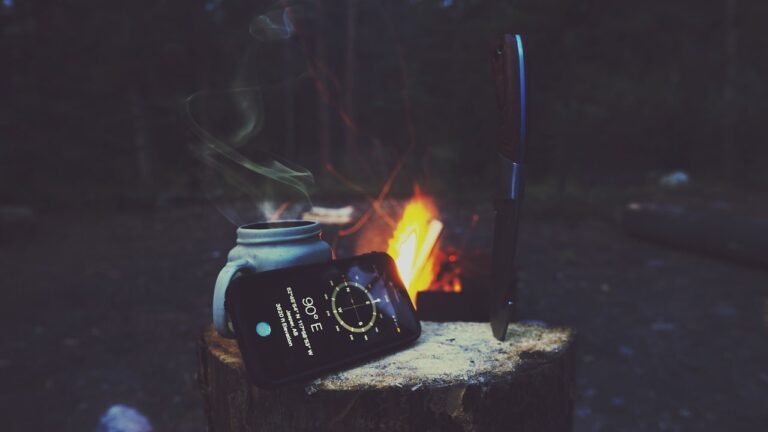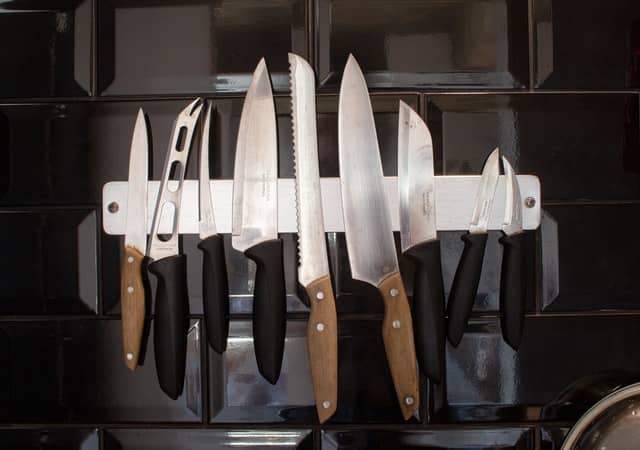Once you go through a knife sharpening guide, everything looks spelled out well enough that anyone can sharpen their knives in no time.
One of the smallest points that you’d tend to face once you are at the whetstone is what direction to sharpen your knife in.
The literature that comes with sharpening materials tends to differ from how most of us grew up sharpening our knives, so which is the best approach?
Your knife should be sharpened with the edge pointing away from you. The knife should be pushed and pulled back on the sharpening stone in the same semi-circular motion which allows for all edges of the knife to get an even treatment on the stone.
Read on to find out more about which way your knife should be sharpened in, and why.
Table of Contents
Why Should the Knife Edge Point Away from You?
I could come up with a lot of reasons for this, but the biggest one is safety.
Proper knife safety does not only matter when you are using the knife, but every time you are handling your knife.
With the edge pointing away from you, there is a high chance that your hand rests on the blade metal in a way that your fingers do not slide into the edge. If anything, the hand you have on the blade metal slides onto the whetstone itself.
Should the knife be facing you, your fingers might slip onto the edge itself when you’re making the pull and push motions against the whetstone.
Which Way Do You Sharpen A Knife Effectively?
There are different methods/ approaches to sharpening your knife:
- Edge leading – where the edge is facing you while sharpening;
- Edge trailing – where the edge is facing away from you as most sharpening materials advise today; and
- Back and forth motion – as the name implies, it involves dragging the knife to and fro against the stone.
Other sharpening styles that you might know would usually be a combination of these.
Now, which is the correct way to sharpen your knives?
The “correct” sharpening motion depends on the intended outcome.
The back-and-forth motion is ideal for setting a new bevel on a sharpening stone which should be followed by the edge-leading stroke for a finer finish. The edge trailing approach works best when using sandpaper (or related medium) to convex a knife.
Should You Push or Pull the Knife Across A Sharpening Stone?
Here, by ‘push’ and ‘pull,’ I believe you mean dragging the knife back and forth on the stone.
When using any stone, you need to angle the knife right against the stone. If you have a countertop whetstone (which is usually more rigid and stable), you can try the push and pull motion.
There is a catch, though:
You never really push and pull the knife across the stone. Not in a straight line, at least.
Every pull should be accompanied by a slight outwards slide such that the knife takes a semi-circular motion. This prevents the edges from being caught in the stone grits, prevents damages to the stone, and improves the sharpening outcome.
To put this better, your sharpening should be like an angled slicing motion. It should look like you were trying to slice a small surface of the whetstone off with every pull of the knife across the stone.
Sharpening a knife with a stone
Besides knowing the right way for your knife to face, there are a series of other things to know when sharpening your knife with a stone.
Fortunately, I have developed guides to:
- Sharpening your kitchen knives on a whetstone; and
- Sharpening any kind of knife on rocks – as well as what stones to use.
In those guides, you learn everything from the best sharpening motion for your knife, to the preferred direction and important angles to use too.







